Beautiful Early Entries Of The 2016 National Geographic Nature Photographer Of The Year Contest
Hunting For Fish
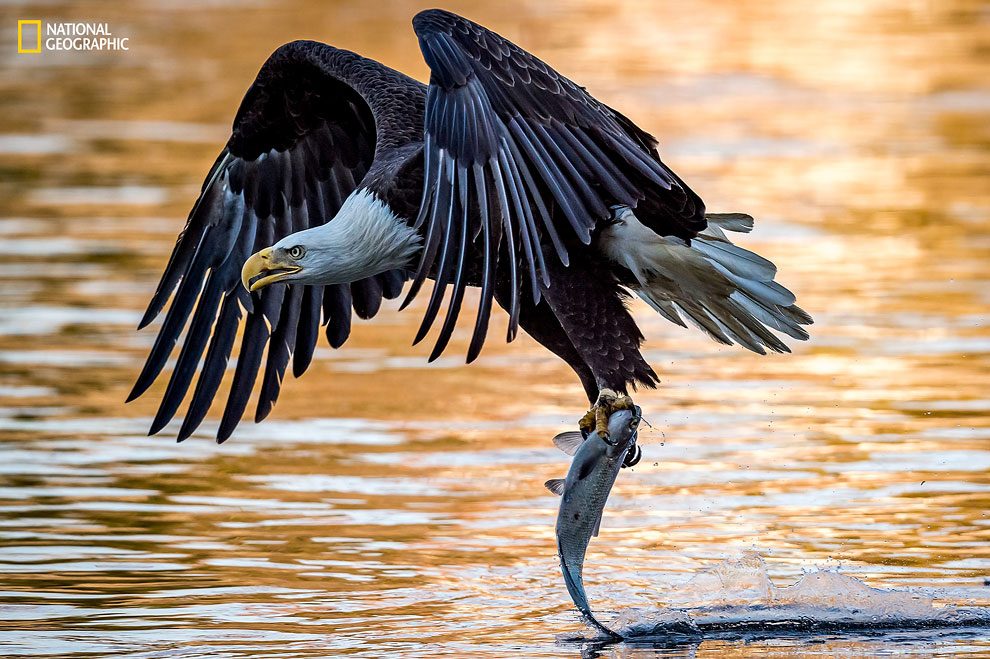
The 2016 National Geographic Nature Photographer of the Year contest is accepting entries in one or all of four categories: Landscape, Environmental Issues, Action and Animal Portraits. The grand-prize winner will receive a 10-day trip for two to the Galápagos with National Geographic Expeditions and two 15-minute image portfolio reviews with National Geographic photo editors.
Here: A mature bald eagle drags the tail of a fish across the surface of the water after picking it up out of the Susquehanna river. It was late in the day when the sun was setting casting an orange hue over the water. (Photo and Caption by Eric Esterle/2016 National Geographic Nature Photographer of the Year)
More info: National Geographic Nature Photographer of the Year
Phoenix Rising
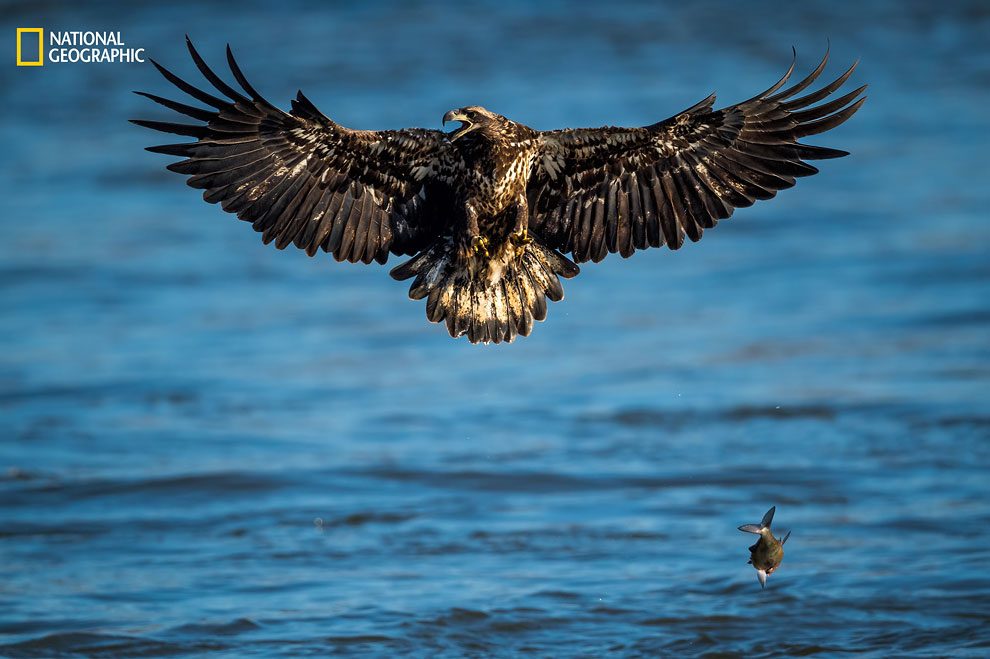
A juvenile bald eagle drops its catch and prepares to defend itself from an approaching adult bald eagle with talons out. In the previous frames, this aggressive and impressive juvenile expertly picked up its catch out of the water and, as seen in this frame, was immediately required to defend itself from the much larger adult. (Photo and Caption by Eric Esterle/2016 National Geographic Nature Photographer of the Year)
Priceless
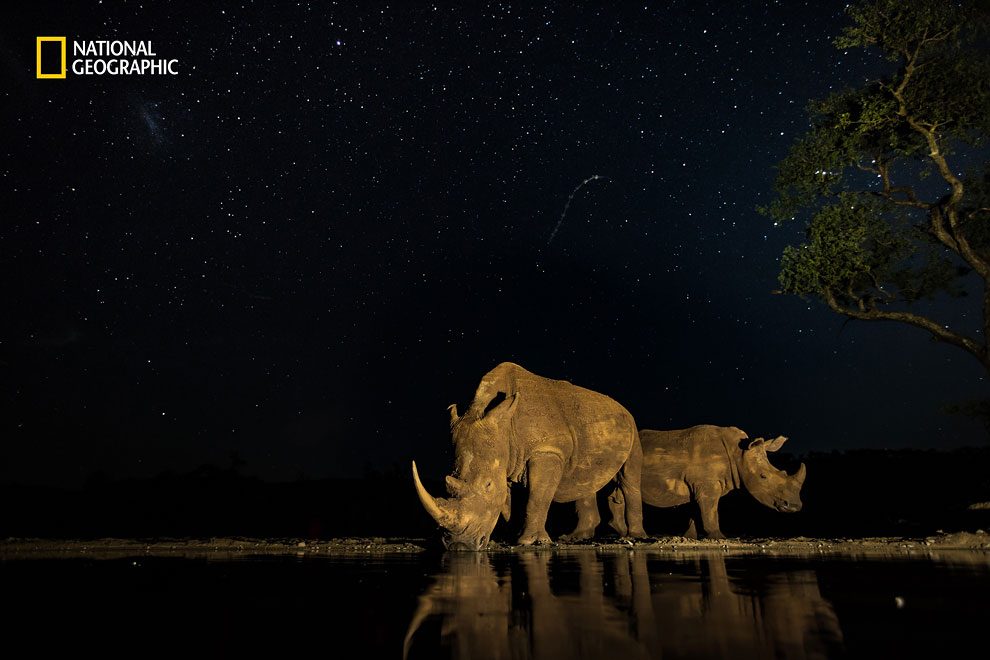
Two very precious endangered beasts gracing me with their presence under the stars in South Africa. So many of these rhino are now being dehorned to save them from poachers that this photographic moment is even more precious to me. A long exposure for the stars while light painting the rhino as they drank makes for an amazing moment captured. (Photo and Caption by Alison Langevad/2016 National Geographic Nature Photographer of the Year)
Curious Lions
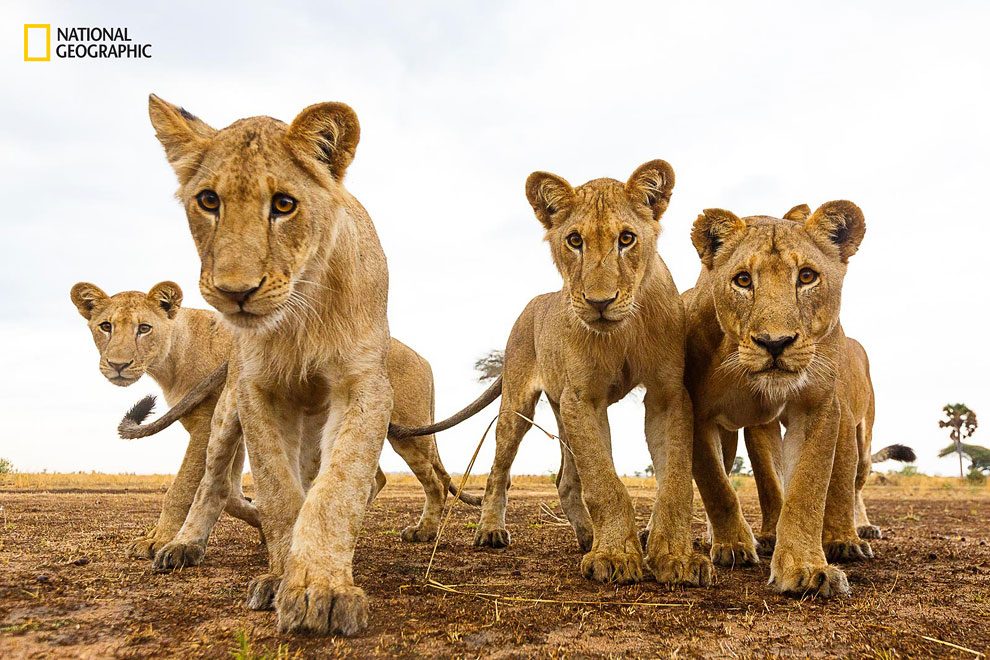
Using a wide-angle lens (16mm) on our remote-controlled camera buggy results in the background being smaller in shot and appearing further away. We fire the camera shutter using the same remote-control transmitter that we use to drive the buggy, allowing us a range of a couple of hundred meters although we rarely sit more than fifty metres away from camera. (Photo and Caption by Kym Illman/2016 National Geographic Nature Photographer of the Year)
Tundra Ghost

Snowy owls are among my favorite birds on the planet. Their elusive nature and elegant flight make them a crown jewel to photograph. Repetition and persistence proved to be the key with this image. Using a slow shutter speed of 1/50 to create this “wing blur” effect I took well over 1,000 unusable photos over three weeks in the field to make this one frame. In this case, the high risk came with a high reward. (Photo and Caption by Aaron Baggenstos/2016 National Geographic Nature Photographer of the Year)
Bear Hug
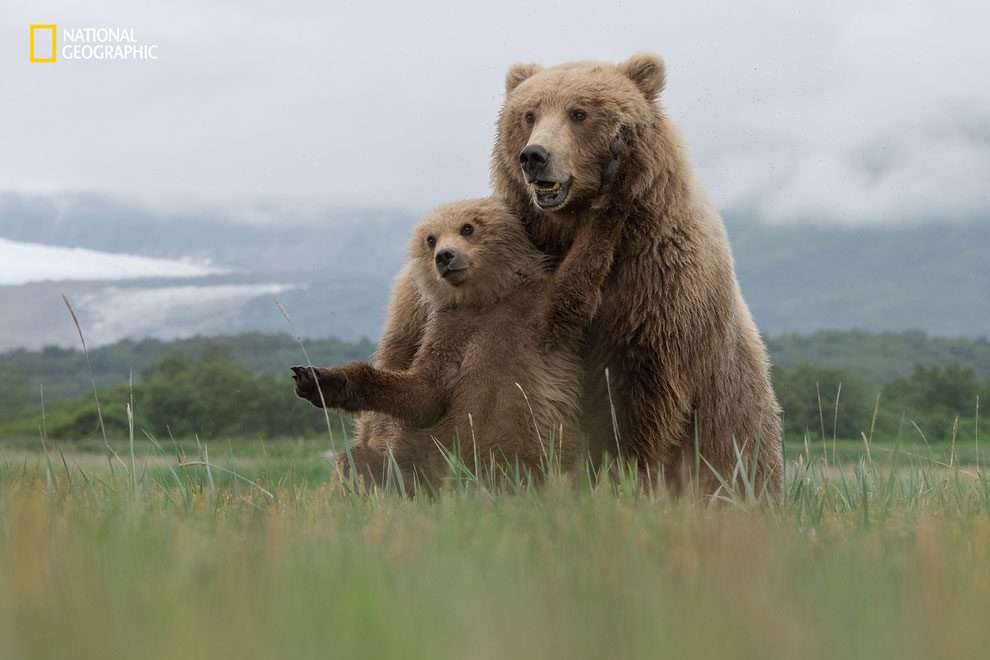
Brown Bears, Katmai National Park, Alaska. (Photo and Caption by Aaron Baggenstos/2016 National Geographic Nature Photographer of the Year)
Burning Tree

Unexpected light burst over the front ranges of the Rockies and ignited the clouds above Lake Minnewanka. The clouds rushed by, catching glimpses of the days first light before fading back in to darkness. A long exposure captured the fleeting light and the feeling of the experience, the colour disappearing within just minutes. (Photo and Caption by Callum Snape/2016 National Geographic Nature Photographer of the Year)
Moonlightning
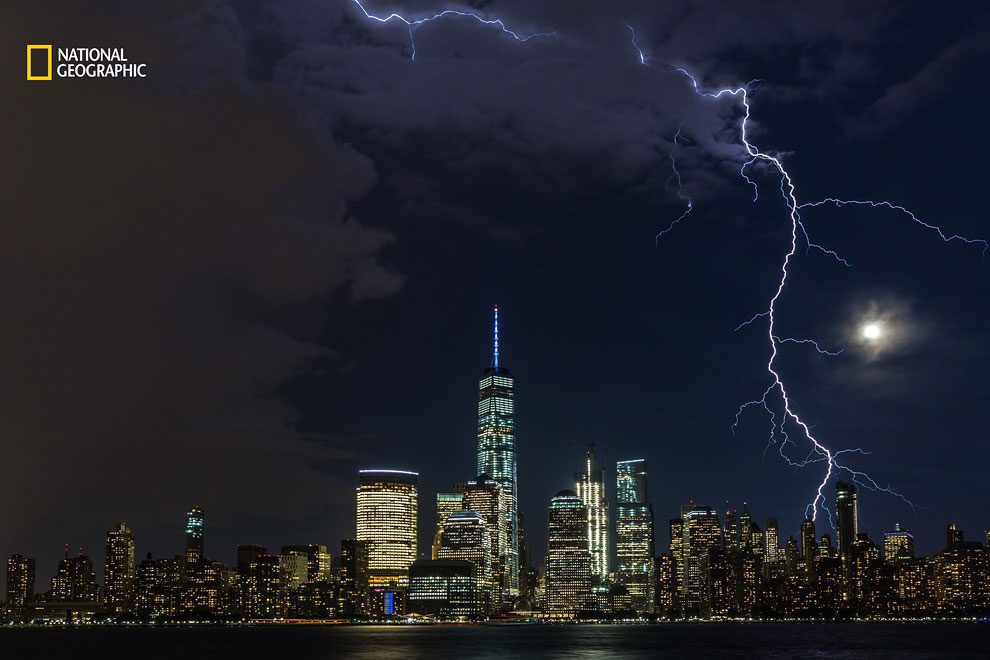
Lightning strikes lower Manhattan as a summer storm approaches a moonlit New York City skyline. (Photo and Caption by Christopher Markisz/2016 National Geographic Nature Photographer of the Year)
UFO formation
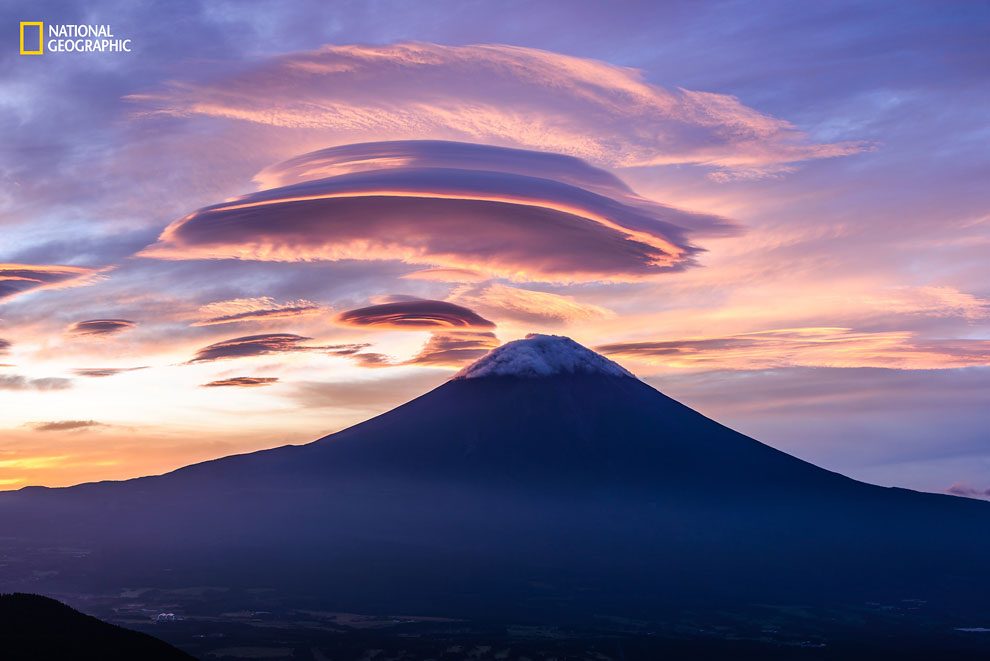
A baby cloud had born at dawn. The baby cloud had grown bigger and bigger than before. When it came the time of the morning glow, It had grown to many huge lenticular clouds. It looked like UFO formation. (Photo and Caption by Takashi/2016 National Geographic Nature Photographer of the Year)
Fossil Fuel Galore
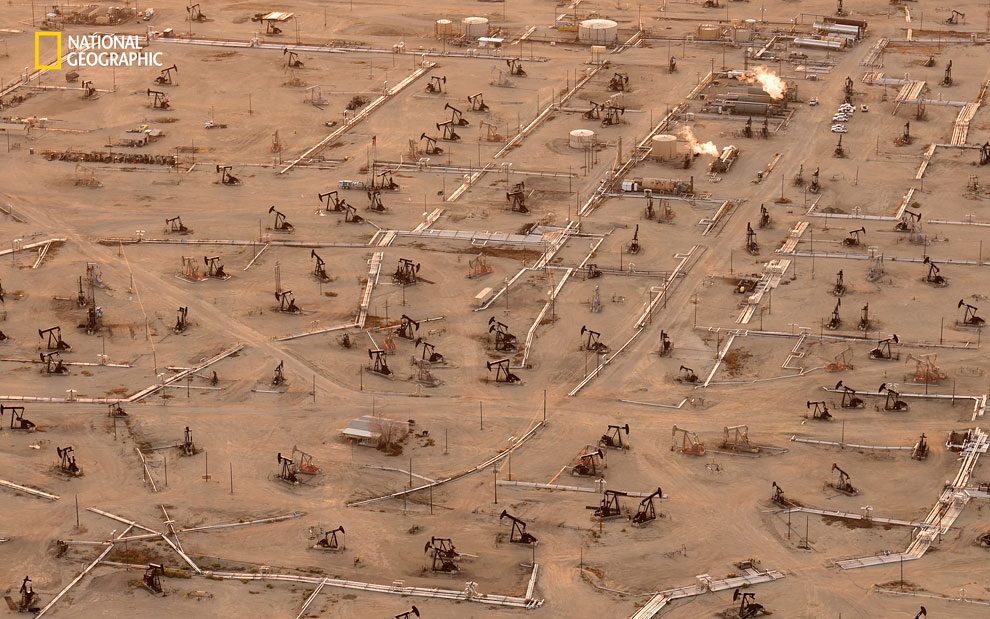
“A quarter century ago, scientists warned that if we kept burning fossil fuel at current rates weíd melt the Arctic. The fossil fuel industry (and most everyone else in power) ignored those warnings, and what do you know: The Arctic is melting, to the extent that people now are planning to race yachts through the Northwest Passage, which until very recently required an icebreaker to navigate.” New York Times, May 12, 2015. Midway-Sunset is currently the largest oil field in California. Aerial. (Photo and Caption by Jassen T. /2016 National Geographic Nature Photographer of the Year)
Surreal!

Surreal! Flying swans, airplane shadow and the abstract looking glacial rivers of Iceland. All of this action captured from a fast flying plane. Aerial Image (shot from an airplane at 1,000 feet). (Photo and Caption by Jassen T. /2016 National Geographic Nature Photographer of the Year)
Mist and Wind
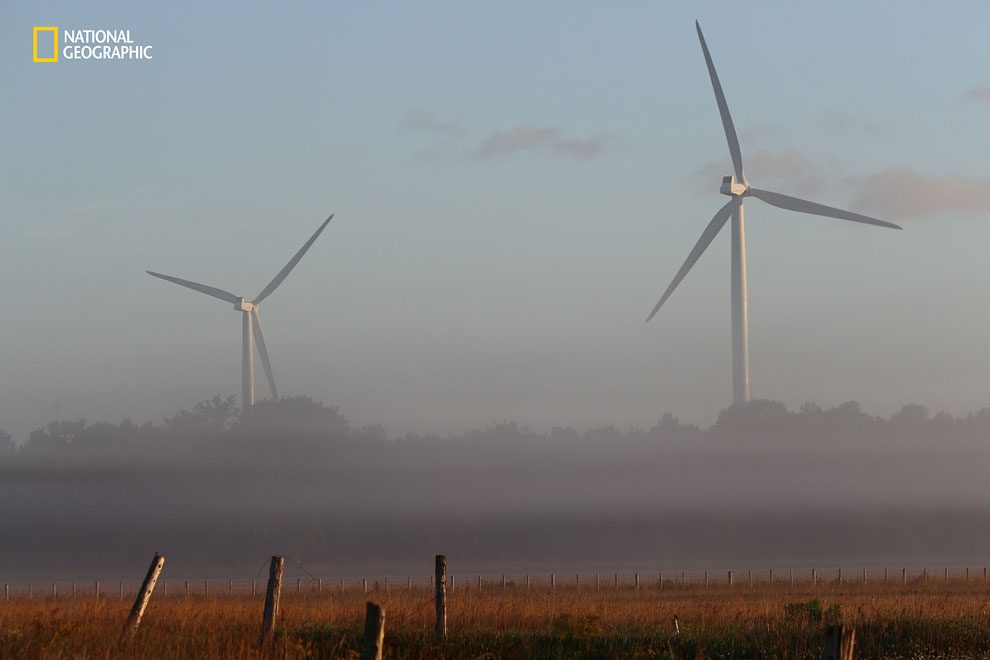
Early this morning we were on our way for hiking at the Bruce Peninsula National Park. The sun was rising, it was misty, eerie and we did not see very far away when suddenly these wind turbines appeared out of the mist. It was quite spectacular. (Photo and Caption by Flamine Alary/2016 National Geographic Nature Photographer of the Year)
Snow White
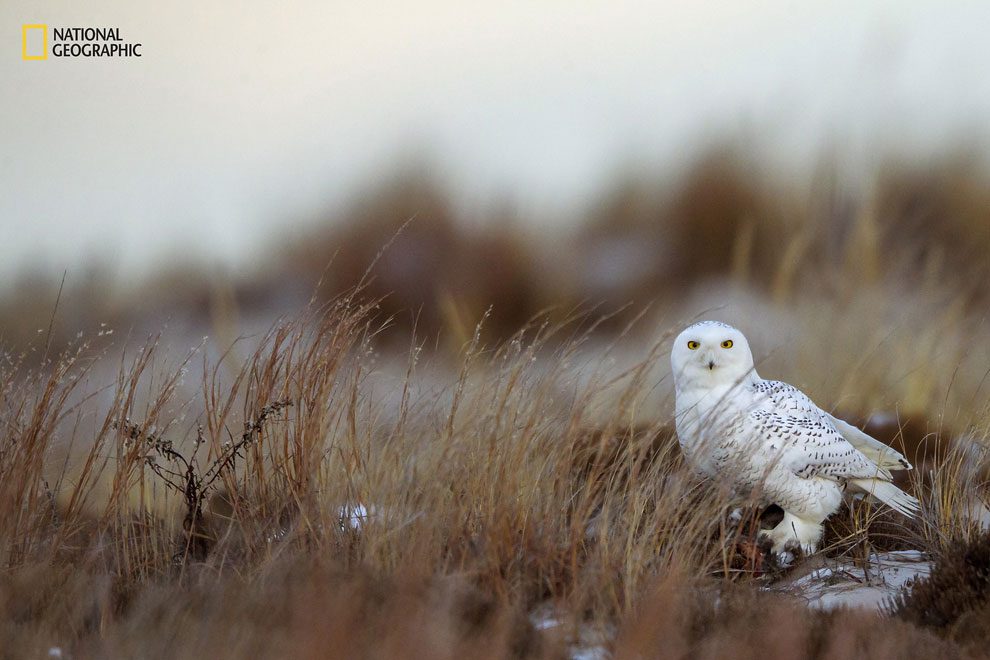
A Snowy Owl lands on Jones Beach New York from out over the Ocean where it captured a Loon. It stands over its prey while tenderizing it with its talons. (Photo and Caption by S. Dere/2016 National Geographic Nature Photographer of the Year)
Battle of the Titans

A pair of Bison square of in the middle of the heard for dominance. (Photo and Caption by S. Dere/2016 National Geographic Nature Photographer of the Year)
Let’s picnic
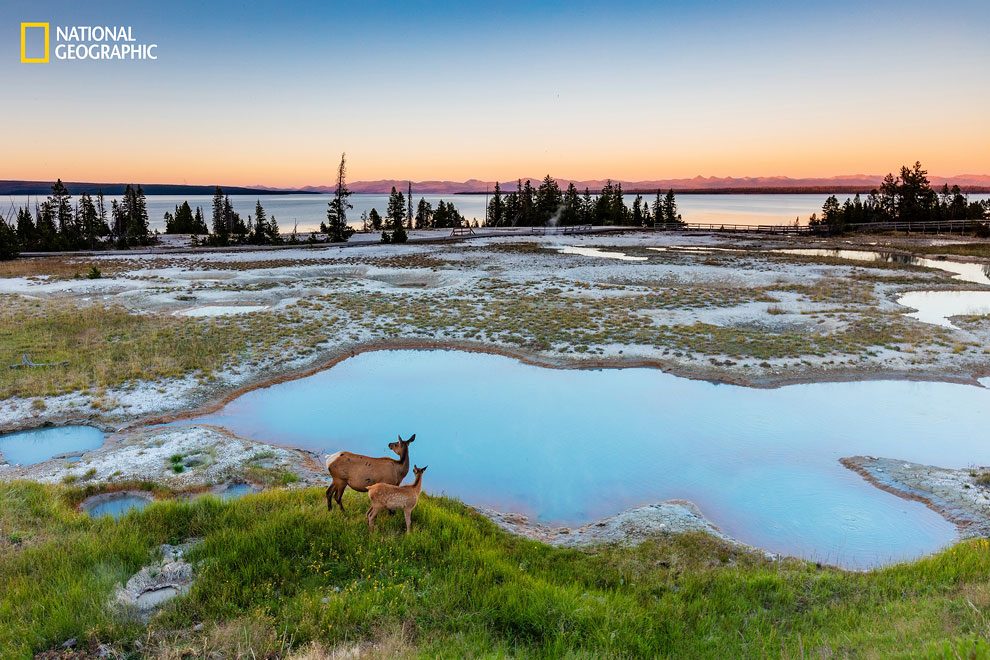
Yellowstone National Park, west thumb geyser basin, a perfect spot for picnic, and I mean not for human. (Photo and Caption by QIAN WANG/2016 National Geographic Nature Photographer of the Year)
Hidden Landscape
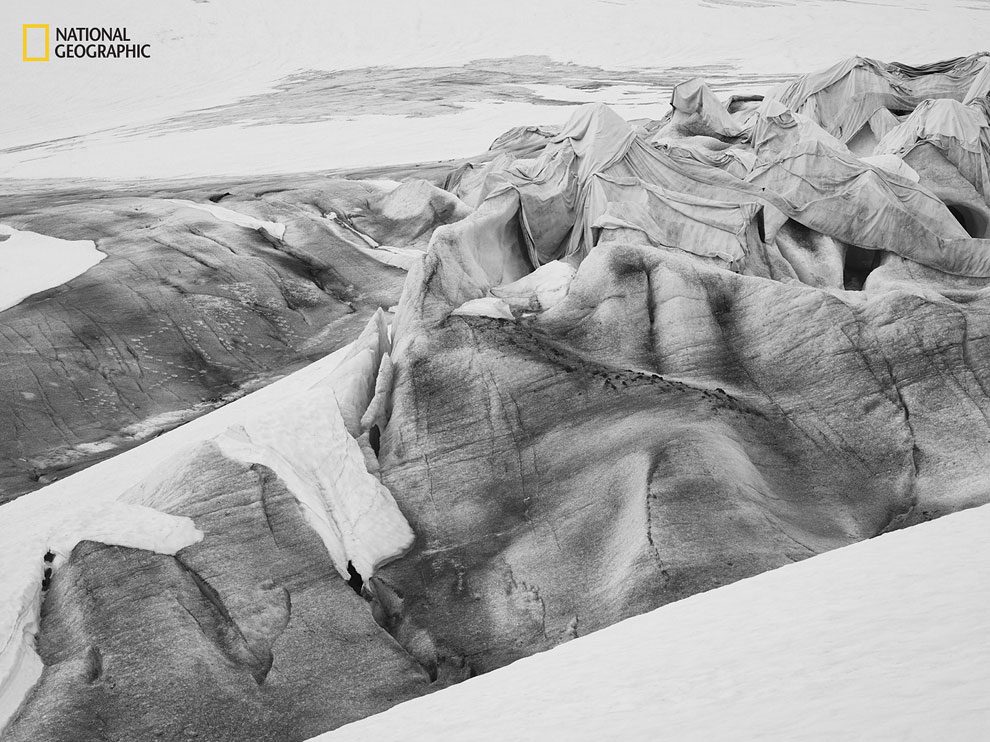
Grey, melted snow and ice runs like silent tears. Crumbling, ancient ice crunches. Tired from the fight against the warmth, the glaciers take flight, fleeing from human ignorance. But there are also people who want to persuade them to stay, desperately asking for a last chance. Wrapping them in soft fleece, providing safety and peace beneath the insulating shield. Rebelling against the powerlessness from the impending effects of global warming. (Photo and Caption by Stefan Schlumpf/2016 National Geographic Nature Photographer of the Year)
Through
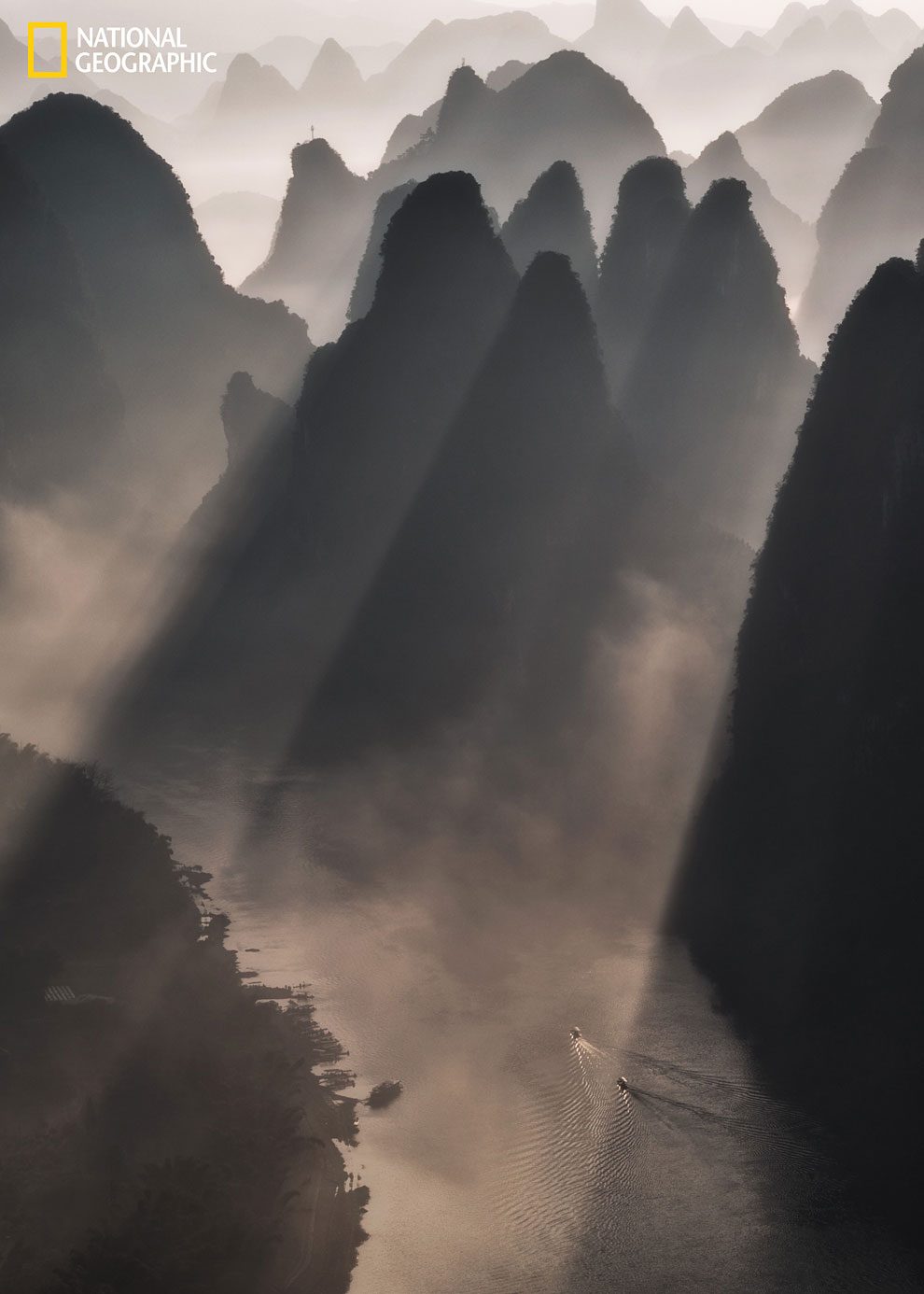
It was amazing to capture China’s beautiful mountains in such magnificent morning rays coming through. (Photo and Caption by Kyon. J/2016 National Geographic Nature Photographer of the Year)
Daybreak at Monument Valley
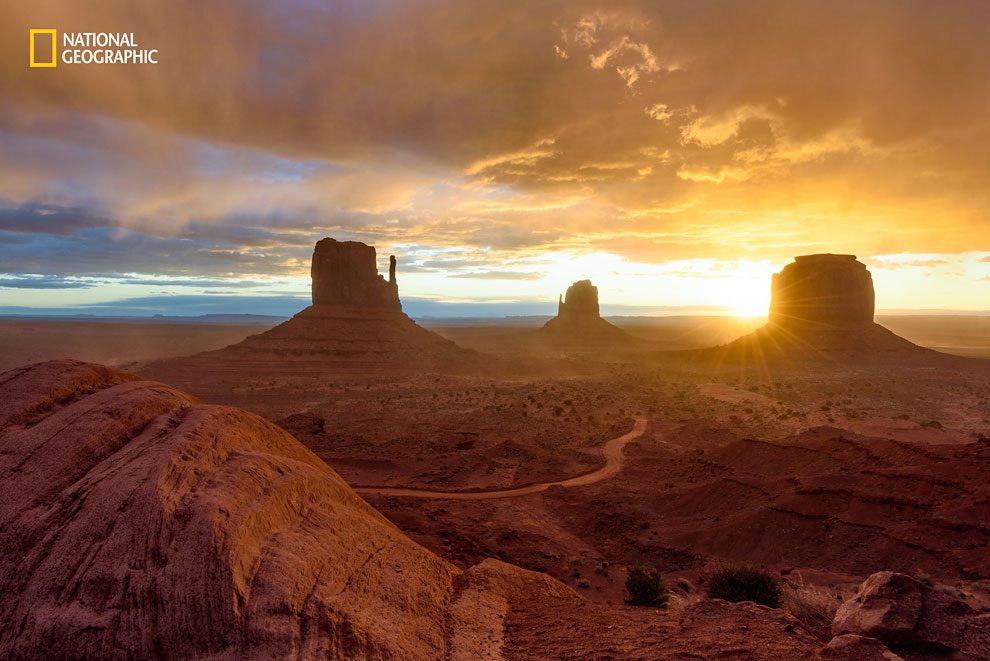
A storm was rolling in from the west and the few of us gathered for sunrise were watching and hoping that day would break before the rains came. The moment the sun peeked above the horizon, we were hit with incredible winds and sideways driving rain. My husband jumped behind me to block the blowing sand and to try to shelter me from the wind. I kept shooting as the skies lit up, while gripping the tripod to keep it steady. This image is the result of those efforts from this memorable sunrise! (Photo and Caption by Lidija Kamansky/2016 National Geographic Nature Photographer of the Year)
The Eye Of A Gator
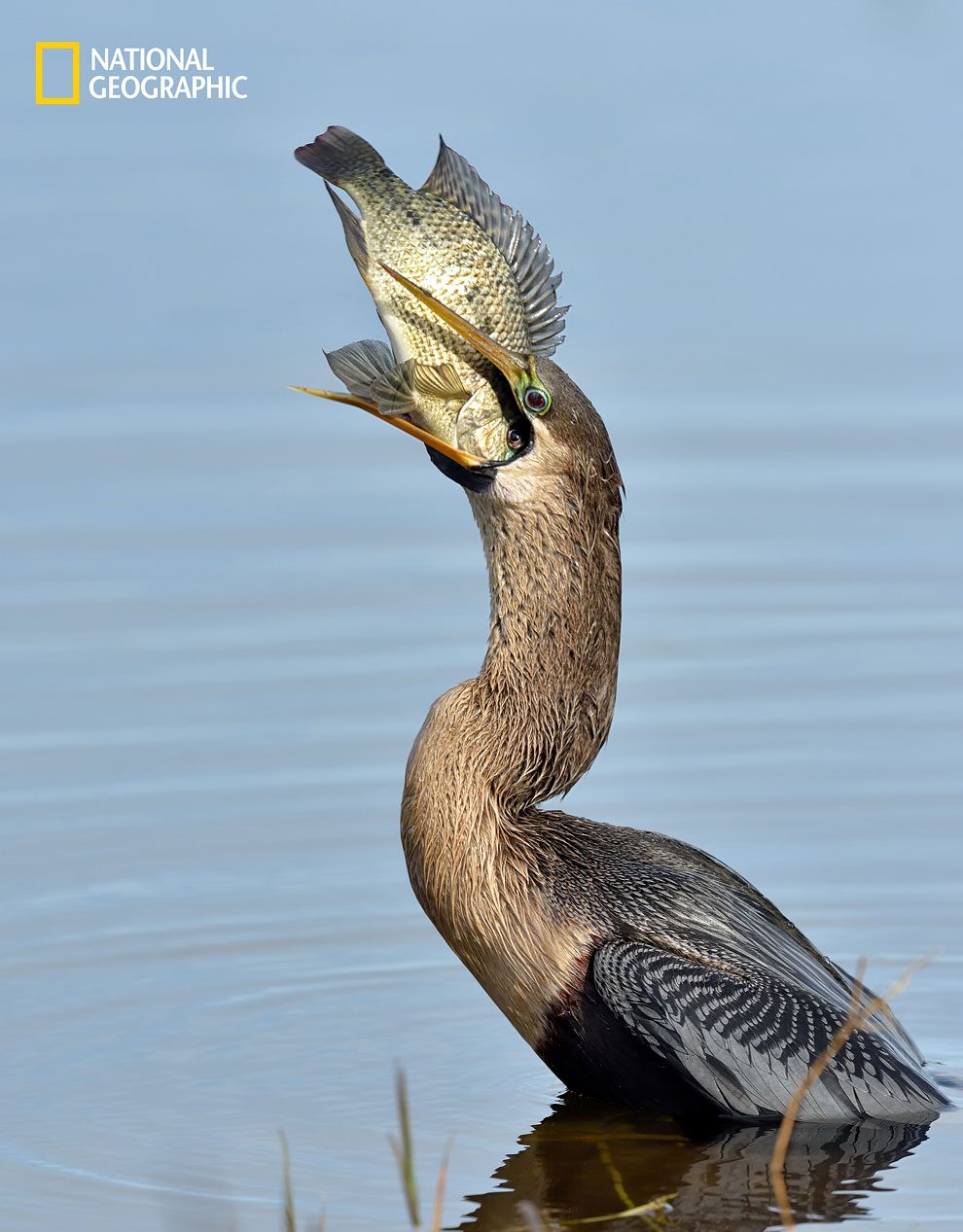
As I was sitting on the bank of the wetlands, watching a pair of anhingas prepare their nest, when one flew right down in front of me to fish. I quickly focused on her and out of the water came a wonderful fish brunch. (Photo and Caption by Nancy Elwood/2016 National Geographic Nature Photographer of the Year)
Silence and the desert
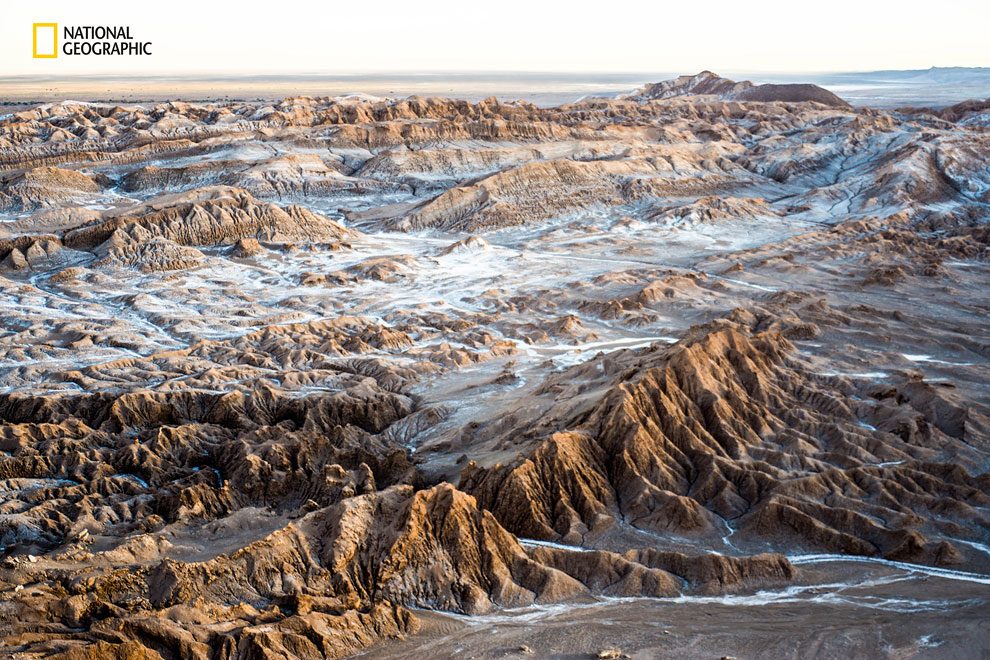
A breathtaking view of Valle de La Luna from Piedra del Coyote, San Pedro de Atacama, north of Chile. (Photo and Caption by Virginia Zoli/2016 National Geographic Nature Photographer of the Year)
Swamp Raccoon
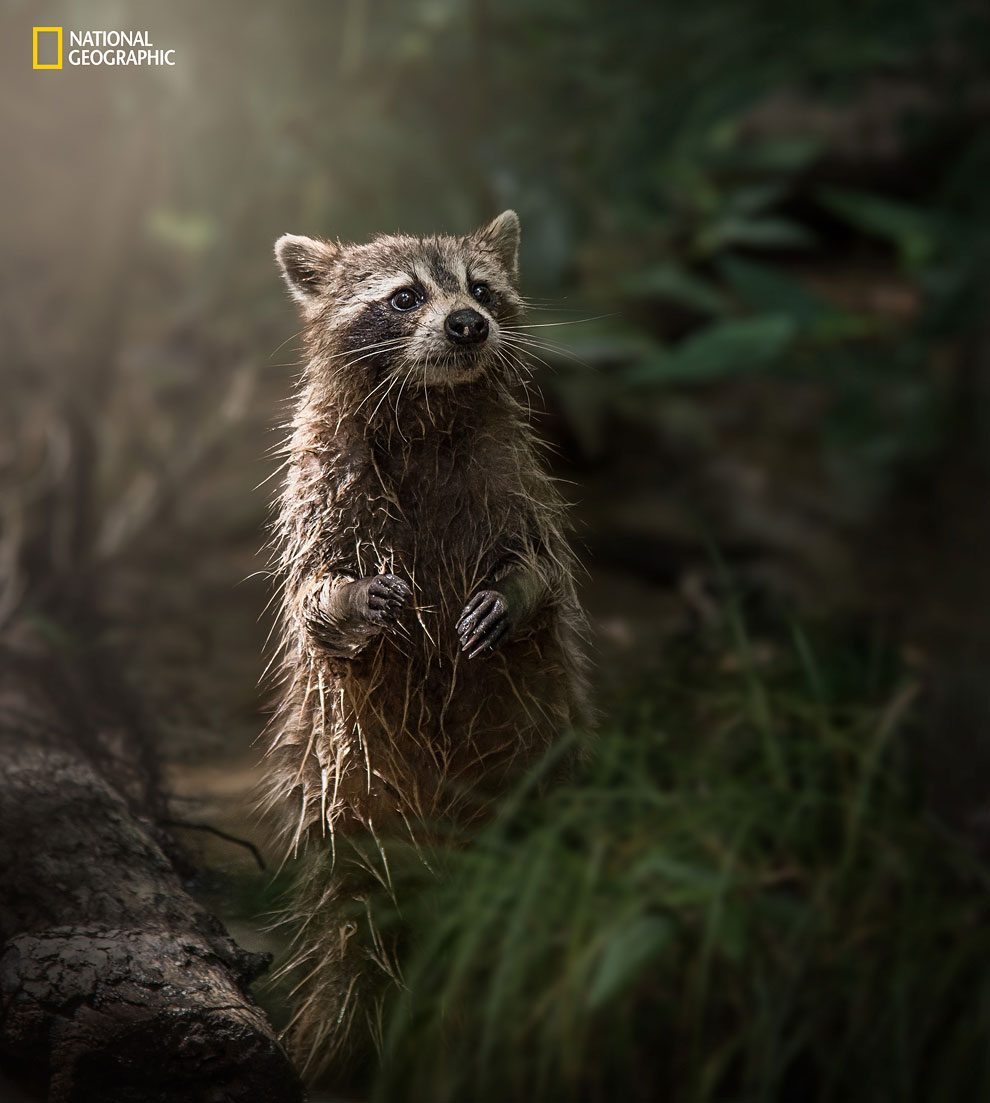
While looking for alligators at a swamp in Louisiana, this beautiful little creature wanders out of the murky waters right into the morning light , pausing just long enough to capture. (Photo and Caption by Kim Aikawa/2016 National Geographic Nature Photographer of the Year)
Beauty Beyond Disaster
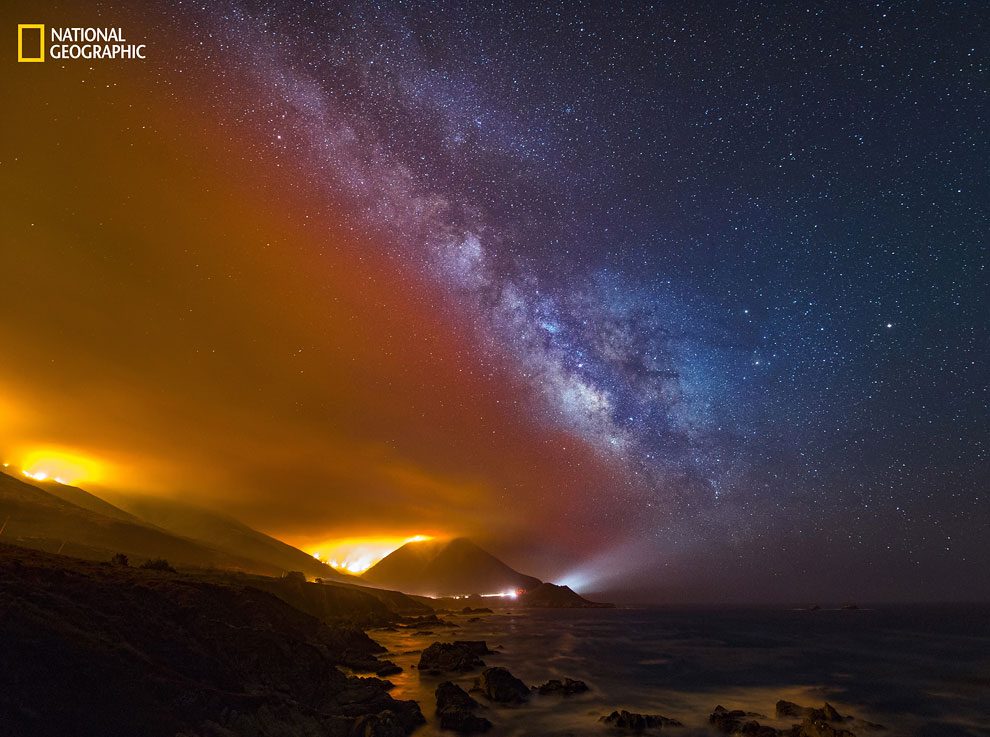
The Soberanes Fire, located south of Carmel and Point Lobos, started Friday morning 07/22/2016. By Saturday night, the fire covered the entire mountain. The sky was illuminated by the golden glow of the forest fire. I hiked down towards a cliff by the beach. Because the wind was blowing south and slightly east, the sky to the southwest was clear. I witnessed the most spectacular sight I have ever seen, the Milky Way glowed above the raging wildfire. Beauty rose beyond disaster. (Photo and Caption by Li Liu/2016 National Geographic Nature Photographer of the Year)
fjaðárgljúfur
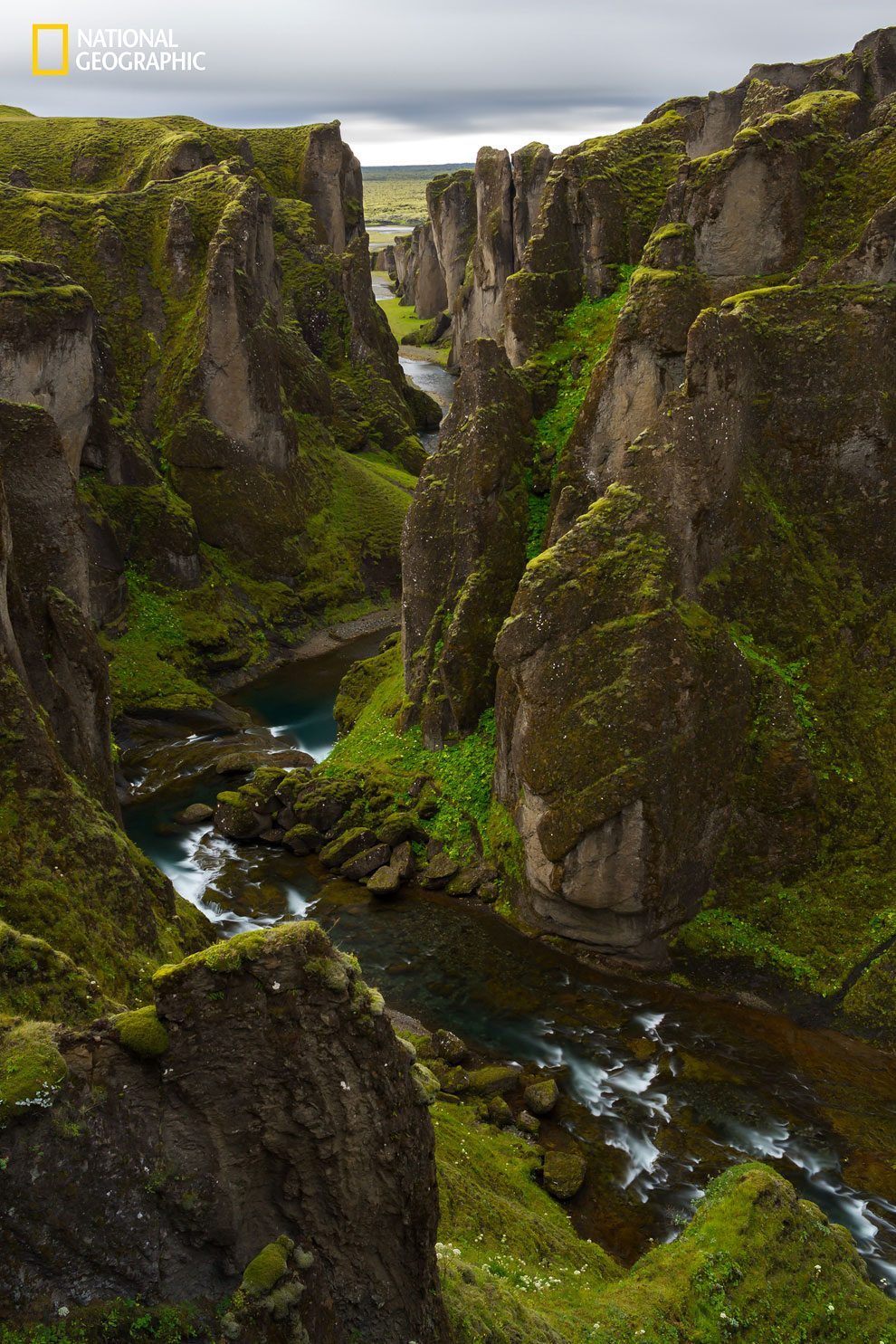
This is a long exposure shot taken from the top of fjaðárgljúfur Canyon Trail. I achieved this shot using a combination of a polarizer and ND1000 filter. The ND1000 filter created silky smooth clouds and rapids. The polarizer removed the skies reflection of the water allowing us to see the river beds colors, rocks, and sediments. The the moss covered cliffs surrounding the river shows how calm and lively mother nature can truly be. (Photo and Caption by Alejandro S. /2016 National Geographic Nature Photographer of the Year)
Spider Web Rice Fields
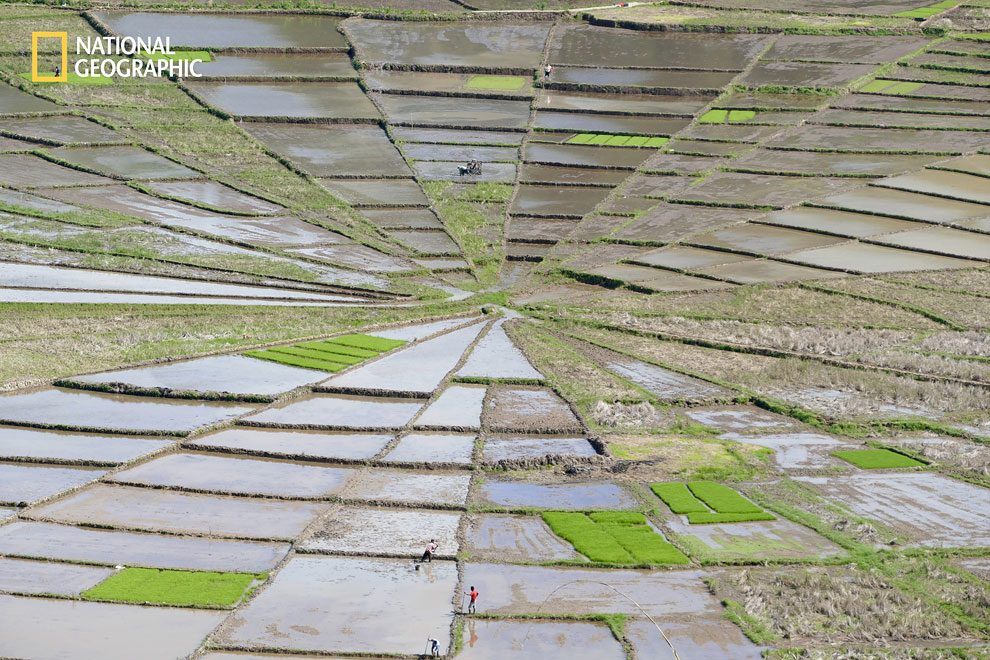
An unusual and intricate spider-web shaped rice field in Cancar – Flores, Indonesia. (Photo and Caption by Wendy Sinclair/2016 National Geographic Nature Photographer of the Year)
Jellyfish
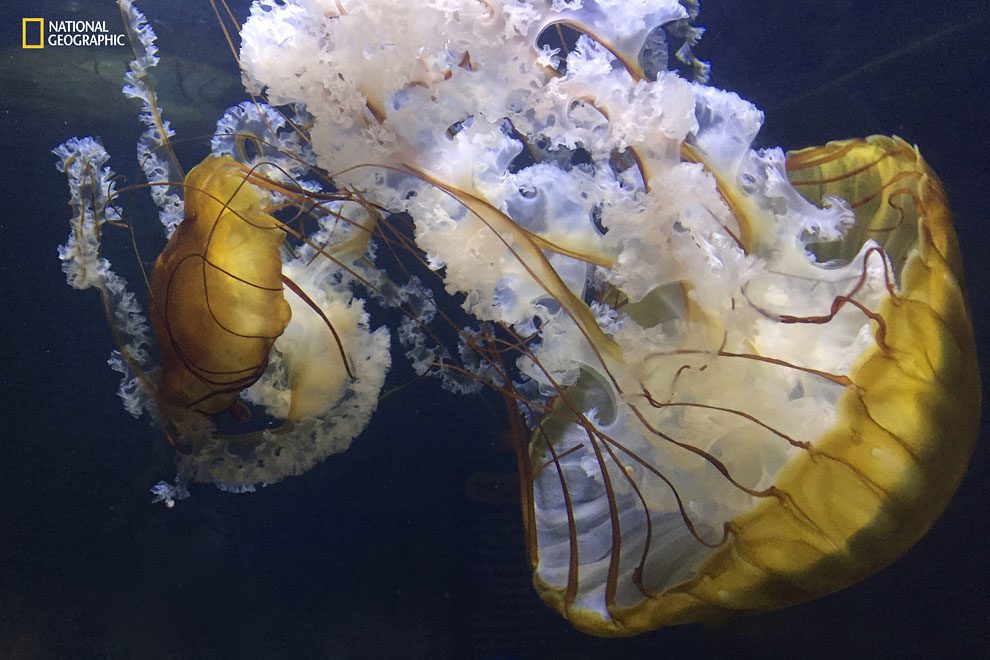
(Photo by T. King/2016 National Geographic Nature Photographer of the Year)
The best spot on the savannah
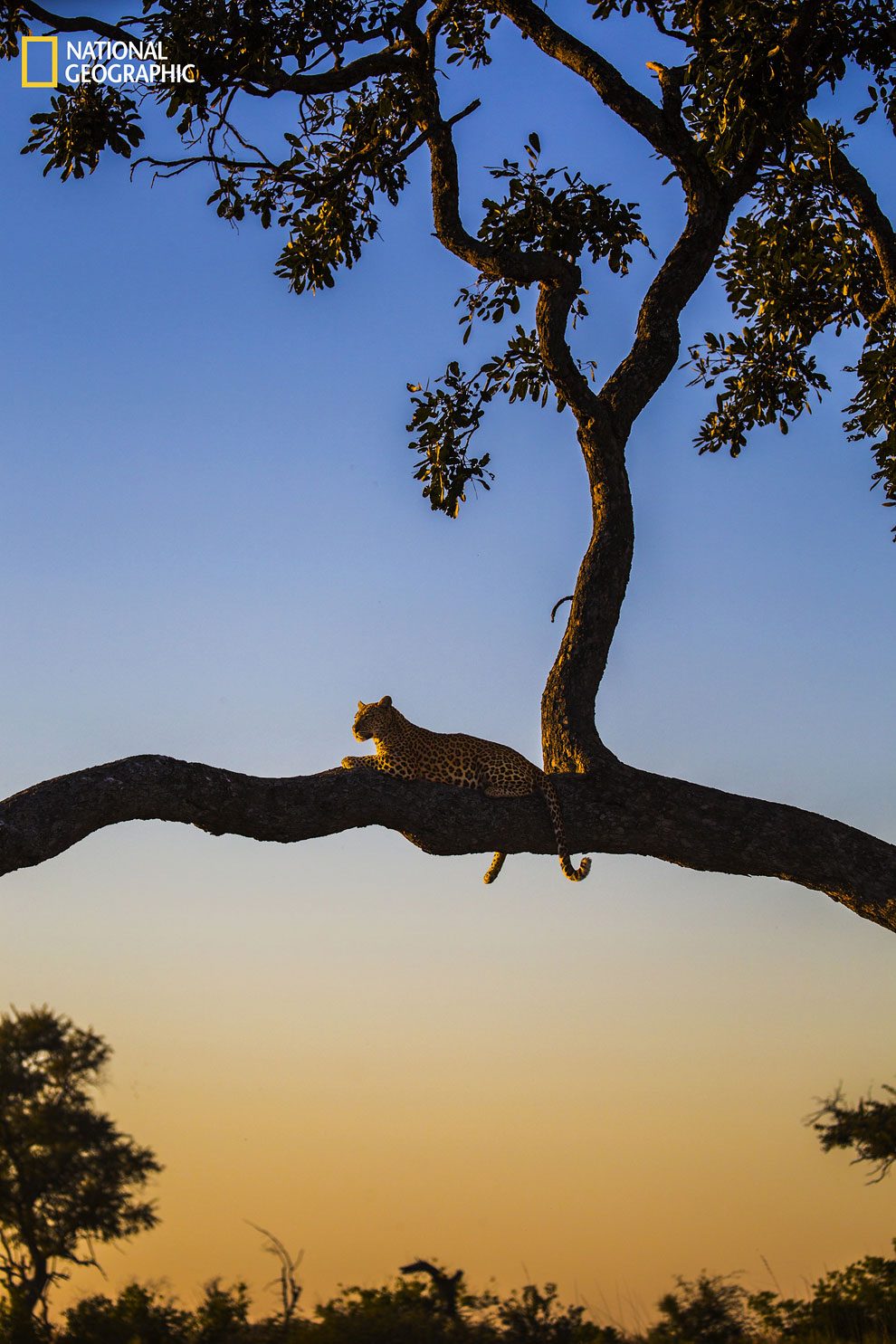
Female leopard gazing out over the savannah in the Okavango Delta, Botswana. (Photo and Caption by Natashia B. /2016 National Geographic Nature Photographer of the Year)
Bull Race
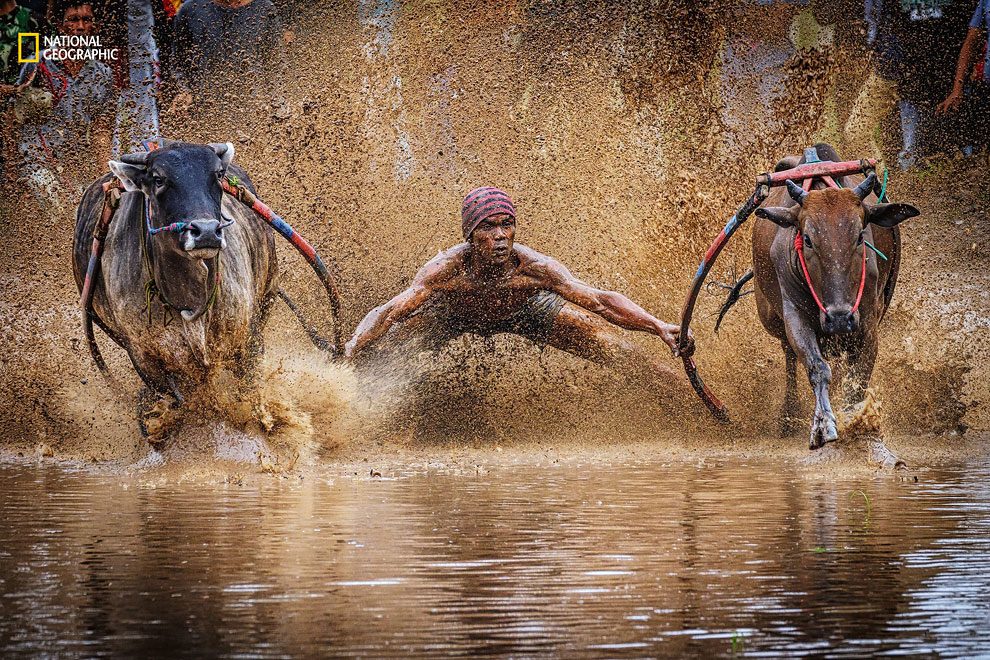
Pacu Jawi, or bull race, is held in Indonesia where bulls are coupled, with the jockey standing on the plow harnesses attached to each bull, running a short distance of about 100 feet. Whichever pair runs the fastest in a straight fashion fetches the highest price (as they are deemed the best workhorse in plowing the paddy fields for harvesting). (Photo and Caption by Yh Lee/2016 National Geographic Nature Photographer of the Year)
Wildebeest Migration
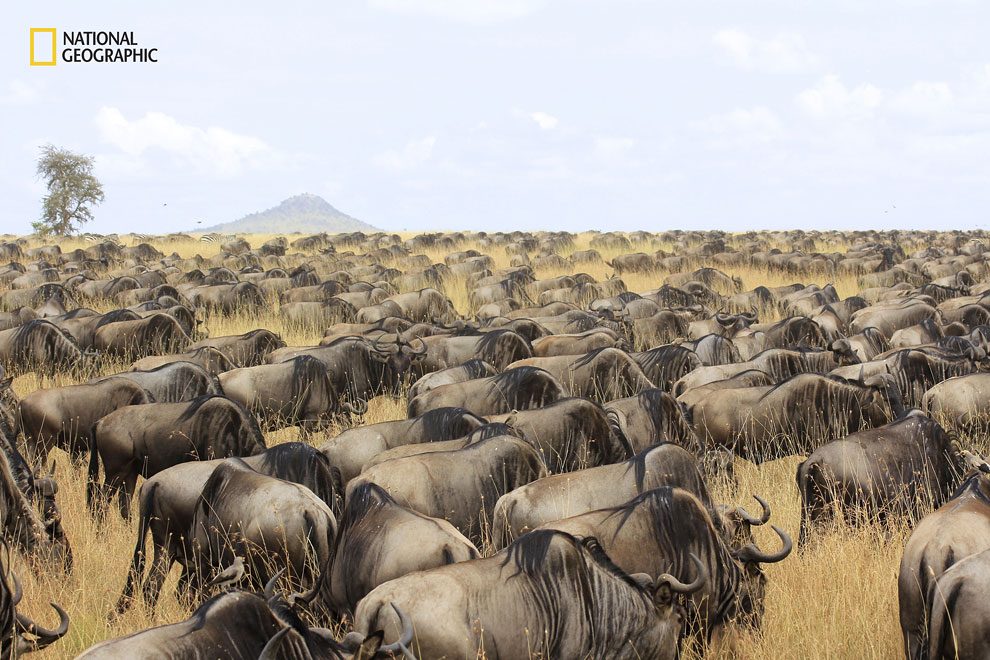
This is a photo of Wildebeest during migration in the Serengeti. (Photo and Caption by Hugh McCrystal/2016 National Geographic Nature Photographer of the Year)